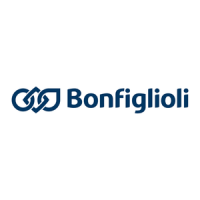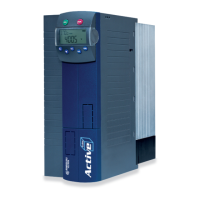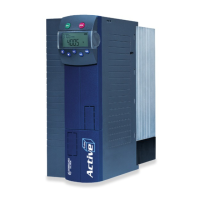
Do you have a question about the BONFIGLIOLI ACTIVE Cube ACU 401-25 and is the answer not in the manual?
| Rated Current | 25 A |
|---|---|
| Protection Class/Degree | IP20 |
| Ambient Temperature | -10...+50°C |
| Storage Temperature | -25 to 70 °C |
| Relative Humidity | 5 to 95% non-condensing |
| Altitude | Up to 1000 m without derating |
| Frequency | 0-599 Hz |
Defines the intended application of the frequency inverter as electrical drive components for industrial plants or machines, complying with relevant directives.
Emphasizes compliance with all safety instructions and danger information provided on the frequency inverter and mandates that safety labels must not be removed.
Details responsibilities for staff selection, qualification, training, and general work safety, emphasizing qualified personnel for electrical work.
Provides specific safety instructions for the STO function, its installation, commissioning, and proper operation to prevent hazards like uncontrolled starting.
Covers essential aspects of connecting the unit, including conductor cross-section dimensioning, mains connection, motor connection, and brake resistor.
Illustrates mains and motor connection diagrams for different ACU series models and power ratings, including cable cross-section recommendations.
Describes the functions and terminal assignments for control signals, including digital inputs, outputs, analog signals, and their parameterization.
Explains how to control the connected motor using the control unit, referencing parameter Local/Remote 412 for operation modes and various key functions.
Provides crucial safety checks and procedures before applying mains voltage to the frequency inverter, including verifying connections and discharge.
Guides users through the guided commissioning procedure to set parameters relevant to the application, including configuration, motor type, and machine data.
Describes the procedure for verifying the correct direction of motor rotation and how to exchange phases if necessary for correct operation.
Explains the connection and configuration of speed sensors, focusing on Speed Sensor 1 and Speed Sensor 2, including operation modes and division marks.
Details Configuration 30, which determines control input/output assignments and software functions, offering various control options for different applications.
Guides users on setting rated motor parameters from the nameplate for accurate control functions and methods, including voltage, current, speed, and power.
Covers additional motor parameters required for precise calculation of the machine model, especially for field-oriented control, such as resistance and inductance.
Explains the connection and configuration of speed sensors, focusing on Speed Sensor 1 connected to digital terminals, including operation modes and division marks.
Details how to parameterize the starting behavior of the 3-phase machine, including flux formation and IxR compensation for sensorless control.
Describes how to define the stopping behavior of the machine using Operation mode 630, including options like free stopping, hold, DC brakes, and emergency stops.
Explains the Auto Start function for applications permitting automatic start at mains voltage, including safety precautions and parameterization.
Describes positioning functions, including reference positioning and axle positioning, which require feedback systems for accuracy and proper operation.
Explains overload behavior based on switching frequency and ambient conditions, detailing warning limits for short and long-term Ixt.
Details temperature monitoring for the frequency inverter, including warning limits for heat sink and inside temperatures and switch-off limits.
Details motor temperature monitoring configuration using operation modes and the link to digital inputs for thermal contact and warning signals.
Discusses phase failure monitoring and its impact on the frequency inverter, motor, and drive components, with parameter Phase supervision 576 for behavior adjustment.
Describes how different functions define reference frequency via the reference frequency value channel, using Reference frequency source 475.
Explains how various signal sources define reference figures using percentage scaling, referencing Reference Percentage Source 476.
Explains the motor potentiometer function for controlling motor speed via digital control signals or control unit keys, with various operation modes.
Details how the multi-function input MFI1 can be configured as voltage, current, or digital input, linking to various software functions.
Explains the configuration of the multi-function output MFO1 as digital, analog, or repetition frequency output, depending on the selected operation mode.
Details current limits designed to prevent inadmissible load and avoid fault switch-offs, extending the current controller for overload reserve optimization.
Describes the technology controller (PID) as an additional function for process control (pressure, flow, level, speed) without external components.
Explains field-oriented control systems based on cascade control and machine model calculation, optimizing current and torque components.
Explains mechanisms for monitoring motor temperature and recognizing thermal overload to prevent damage, using direct or indirect methods.
Provides a chronological list of the last 16 fault messages, including error codes, descriptions, and functions, facilitating operational and error diagnosis.
Details specific error messages grouped by categories like Overload, Heat Sink, Motor Connection, Output current, DC-Link Voltage, and Brake chopper.











